- Types of Indoor Trees: A Comprehensive Guide
- 1. Ficus tree
- 2. Snake plant
- 3. Rubber tree
- 4. Norfolk Island pine
- 5. Areca palm
- Benefits of Indoor Trees
- Low-Maintenance Indoor Trees for Beginners
- 1. Snake Plant (Sansevieria trifasciata)
- 2. ZZ Plant (Zamioculcas zamiifolia)
- 3. Pothos (Epipremnum aureum)
- 4. Norfolk Island Pine (Araucaria heterophylla)
- 5. Ficus Tree (Ficus benjamina)
- 6. Chinese Evergreen (Aglaonema)
- 7. Money Tree (Pachira aquatica)
- Colorful Indoor Trees to Brighten Your Space
- 1. Croton (Codiaeum variegatum)
- 2. Fiddle Leaf Fig (Ficus lyrata)
- 3. Majesty Palm (Ravenea rivularis)
- 4. Chinese Money Plant (Pilea peperomioides)
- 5. Dracaena (Dracaena spp.)
- Pet-Friendly Indoor Trees: Safe Options for Your Furry Friends
- 1. Areca Palm (Dypsis lutescens)
- 2. Boston Fern (Nephrolepis exaltata)
- 3. Money Tree (Pachira aquatica)
- 4. Spider Plant (Chlorophytum comosum)
- 5. Rubber Tree (Ficus elastica)
- 6. Bamboo Palm (Chamaedorea seifrizii)
- 7. Friendship Plant (Pilea involucrata)
- Tropical Indoor Trees: Bringing the Exotic to Your Home
- Benefits of Tropical Indoor Trees
- Popular Tropical Indoor Trees
- Care Tips for Tropical Indoor Trees
- Unique Indoor Trees: Stand Out with Unusual Varieties
- Bottle Palm
- Dwarf Umbrella Tree
- Money Tree
- Dragon Tree
- Small Indoor Trees for Limited Space
- 1. Ficus Bonsai
- 2. Money Tree
- 3. Norfolk Island Pine
- 4. Miniature Olive Tree
- 5. Ponytail Palm
- Large Indoor Trees: Creating a Statement in Your Interior
- Benefits of Large Indoor Trees
- Popular Varieties of Large Indoor Trees
- Caring for Large Indoor Trees
- Light:
- Watering:
- Fertilization:
- Pruning:
- Q&A:
- What are the benefits of having indoor trees?
- What are the different types of indoor trees?
- What is the best type of indoor tree for small spaces?
- How often should indoor trees be watered?
- What are some tips for caring for indoor trees?
- Can indoor trees survive in low light conditions?
- Video: HOUSEPLANT CARE TIPS FOR BEGINNERS » + printable guide
Indoor trees can bring life and beauty to any space, whether it’s your home, office, or even a small apartment. They not only enhance the aesthetic appeal of an area, but they also improve the air quality by releasing oxygen and absorbing harmful pollutants. With so many different types of indoor trees to choose from, finding the right one for your space can be a daunting task. In this ultimate guide, we will explore some of the most popular indoor trees and their unique characteristics.
Fiddle Leaf Fig: The fiddle leaf fig is a popular choice for indoor trees due to its large, violin-shaped leaves that add drama and elegance to any room. This tree requires bright, indirect light and moderate watering to thrive. It is known for its ability to purify the air and its easy adaptability to different environments.
Rubber Tree: The rubber tree is a low-maintenance indoor tree that is perfect for beginners. It has broad, glossy leaves and can grow to be quite tall over time. This tree prefers bright, indirect light and requires watering only when the top inch of soil is dry. The rubber tree is also known for its air-purifying properties, making it a great addition to any indoor space.
Snake Plant: The snake plant, also known as Mother-in-Law’s Tongue, is a popular choice for indoor trees due to its ability to thrive in low light conditions and its air-purifying qualities. It has long, upright leaves that are often variegated with shades of green and yellow. This tree requires minimal watering and is perfect for those with a busy lifestyle or a tendency to forget to water their plants.
“Indoor trees can transform any space into a lush and green oasis. With the right care and attention, these trees can thrive indoors and provide numerous benefits. Whether you choose a fiddle leaf fig, a rubber tree, or a snake plant, each indoor tree brings its own unique beauty and charm.”
Types of Indoor Trees: A Comprehensive Guide
1. Ficus tree
The Ficus tree, also known as the Weeping Fig, is a popular choice for indoor trees due to its low-maintenance nature and ability to thrive in indoor environments. It has glossy, dark green leaves and can grow up to 10 feet tall. The Ficus tree is a great choice for those looking to add a touch of tropical greenery to their indoor space.
2. Snake plant
The Snake plant, also known as Sansevieria, is a versatile indoor tree that is known for its ability to improve air quality by removing toxins from the environment. It has long, stiff leaves that come in various shades of green, and it can tolerate low light conditions. The Snake plant is a popular choice for those who want an easy-to-care-for indoor tree.
3. Rubber tree
The Rubber tree, or Ficus elastica, is a large indoor tree that is characterized by its thick, shiny leaves. It can grow up to 8 feet tall and is known for its air-purifying qualities. The Rubber tree is a great choice for those who want a statement piece in their indoor space.
4. Norfolk Island pine
The Norfolk Island pine, or Araucaria heterophylla, is a popular choice for indoor Christmas trees due to its conical shape and soft, needle-like leaves. It can grow up to 6 feet tall and is relatively low-maintenance. The Norfolk Island pine is a great choice for those who want a festive touch in their indoor space.
5. Areca palm
The Areca palm, or Dypsis lutescens, is a tropical indoor tree with feathery, arching leaves. It can grow up to 8 feet tall and is known for its ability to purify the air and add a touch of elegance to any indoor space. The Areca palm is a popular choice for those who want a tropical vibe in their home or office.
- Ficus tree
- Snake plant
- Rubber tree
- Norfolk Island pine
- Areca palm
These are just a few examples of the different types of indoor trees available. Each indoor tree has its own unique characteristics and care requirements, so it’s important to do some research and choose the tree that best fits your indoor space and lifestyle. Whether you’re looking for a low-maintenance tree or a statement piece, there is sure to be an indoor tree that is perfect for you.
Benefits of Indoor Trees
- Improved Air Quality: Indoor trees help to improve the air quality by absorbing carbon dioxide and releasing oxygen. They also help to remove toxins and pollutants from the air, making it fresher and cleaner.
- Enhanced Mood: Having indoor trees in your space can help to improve your mood and reduce stress. Studies have shown that being in close proximity to nature can have a positive impact on mental health.
- Natural Humidifier: Indoor trees release moisture into the air through a process called transpiration. This can help to increase humidity levels in your home, which is especially beneficial during dry winter months or in centrally heated or air-conditioned spaces.
- Noise Reduction: Indoor trees can help to absorb sound and reduce noise levels in your space. This can create a more peaceful and relaxing environment, especially in busy areas or homes located near main roads.
- Improved Productivity: It has been found that having indoor plants, including trees, in the workplace can enhance productivity and creativity. They can also help to improve focus, reduce fatigue and increase overall satisfaction.
- Decorative Element: Indoor trees not only provide numerous health benefits but also add a decorative touch to your space. They can be used as focal points or statement pieces, and their lush green foliage can bring a sense of nature and serenity into any room.
- Easy to Care for: Many indoor tree varieties are low-maintenance and require minimal care. They can tolerate a wide range of light conditions and are generally forgiving when it comes to watering frequency. This makes them ideal for beginners or busy individuals.
- Long-Lasting: With proper care, indoor trees can live for many years, providing you with long-lasting benefits and enjoyment. They can become constant companions, adding beauty and vitality to your indoor space for years to come.
Low-Maintenance Indoor Trees for Beginners
Indoor trees can bring a touch of nature into your home and improve the air quality. However, not all indoor trees are easy to care for, especially for beginners. If you’re new to indoor gardening or simply don’t have a lot of time to dedicate to plant care, low-maintenance indoor trees are the perfect choice for you. Here are a few options to consider:
1. Snake Plant (Sansevieria trifasciata)
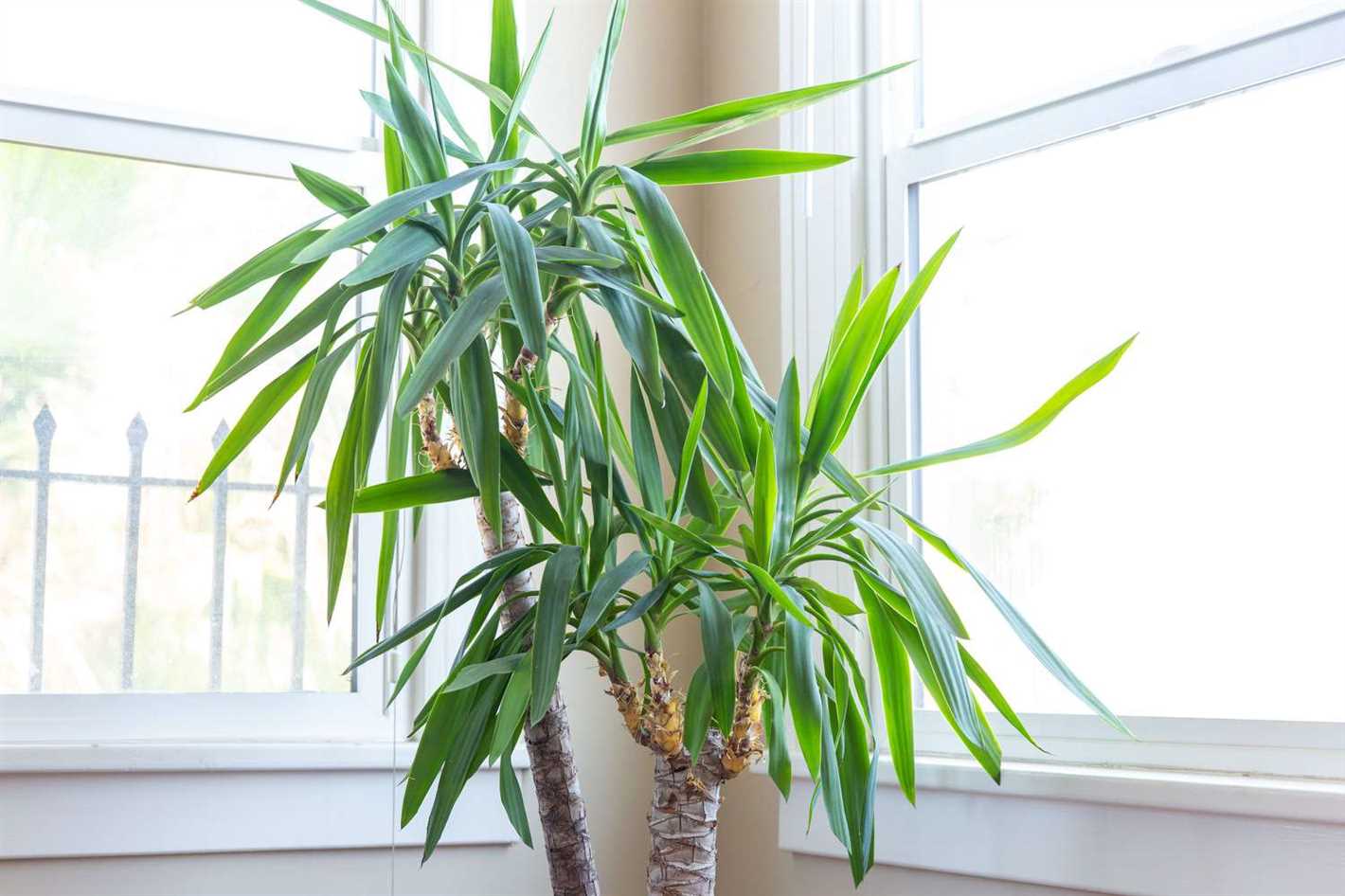
This popular indoor tree is known for its ability to thrive in low light conditions and tolerate neglect. The snake plant has long, upright leaves with a unique pattern that adds interest to any space. It requires minimal watering and can go for weeks without needing attention.
2. ZZ Plant (Zamioculcas zamiifolia)
The ZZ plant is another excellent choice for beginners. It has glossy, dark green leaves that can add a touch of elegance to your indoor space. It can tolerate low light and irregular watering, making it a low-maintenance option for busy individuals.
3. Pothos (Epipremnum aureum)
The pothos is a popular choice for indoor gardening enthusiasts of all levels. It has trailing vines with heart-shaped leaves that come in various shades of green. Pothos can thrive in a wide range of light conditions and can bounce back quickly if you forget to water it occasionally.
4. Norfolk Island Pine (Araucaria heterophylla)
This tree has a classic Christmas tree shape and can add a festive touch to your home all year round. The Norfolk Island pine prefers bright indirect light and can tolerate dry air, making it suitable for most indoor environments.
5. Ficus Tree (Ficus benjamina)
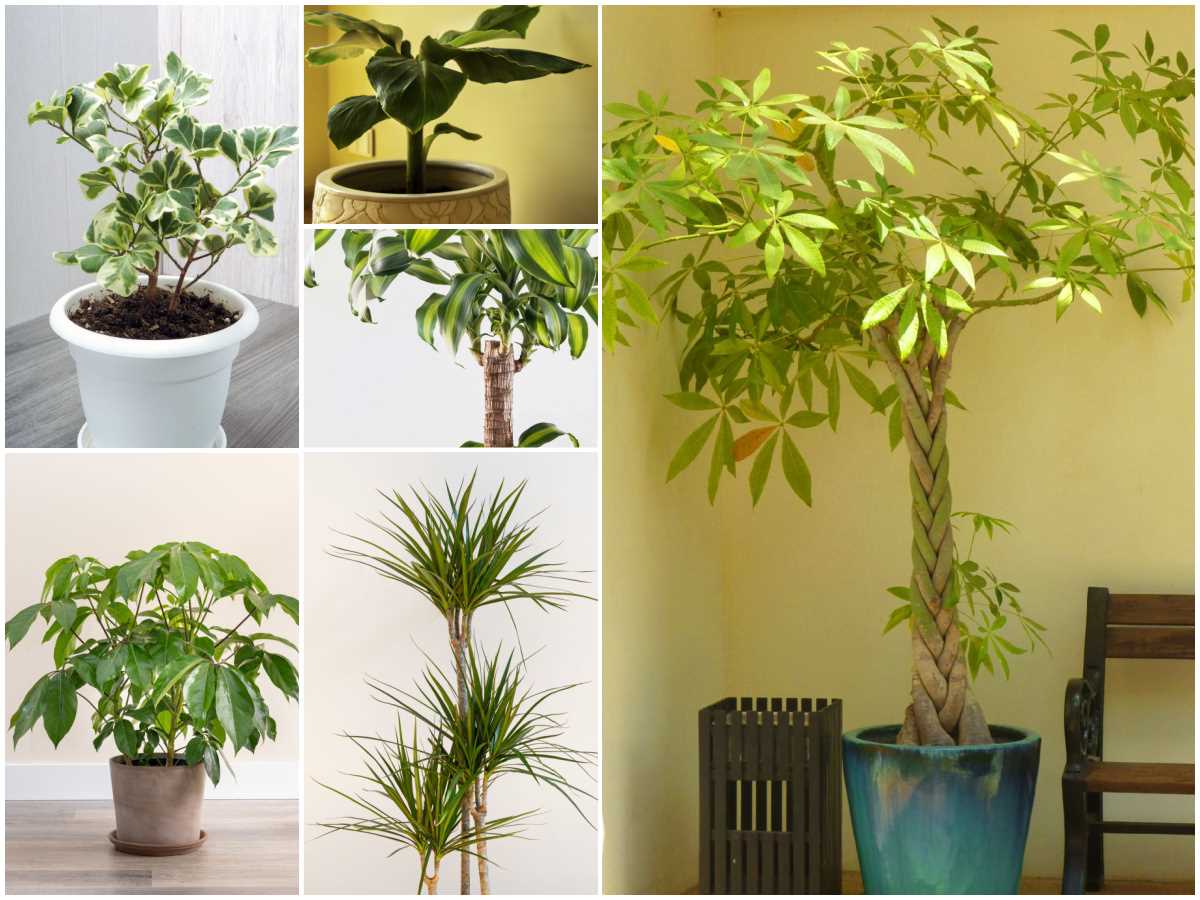
If you’re looking for a larger indoor tree, the ficus is a popular choice. It has glossy leaves and can grow tall, making it a statement piece in any room. Ficus trees prefer bright, indirect light and regular watering, but they are generally forgiving if you miss a watering or two.
6. Chinese Evergreen (Aglaonema)
The Chinese evergreen is a beautiful and low-maintenance indoor tree. It has bold, variegated leaves that come in various shades of green and silver. Chinese evergreens can tolerate low light conditions and irregular watering, making them perfect for beginners.
7. Money Tree (Pachira aquatica)
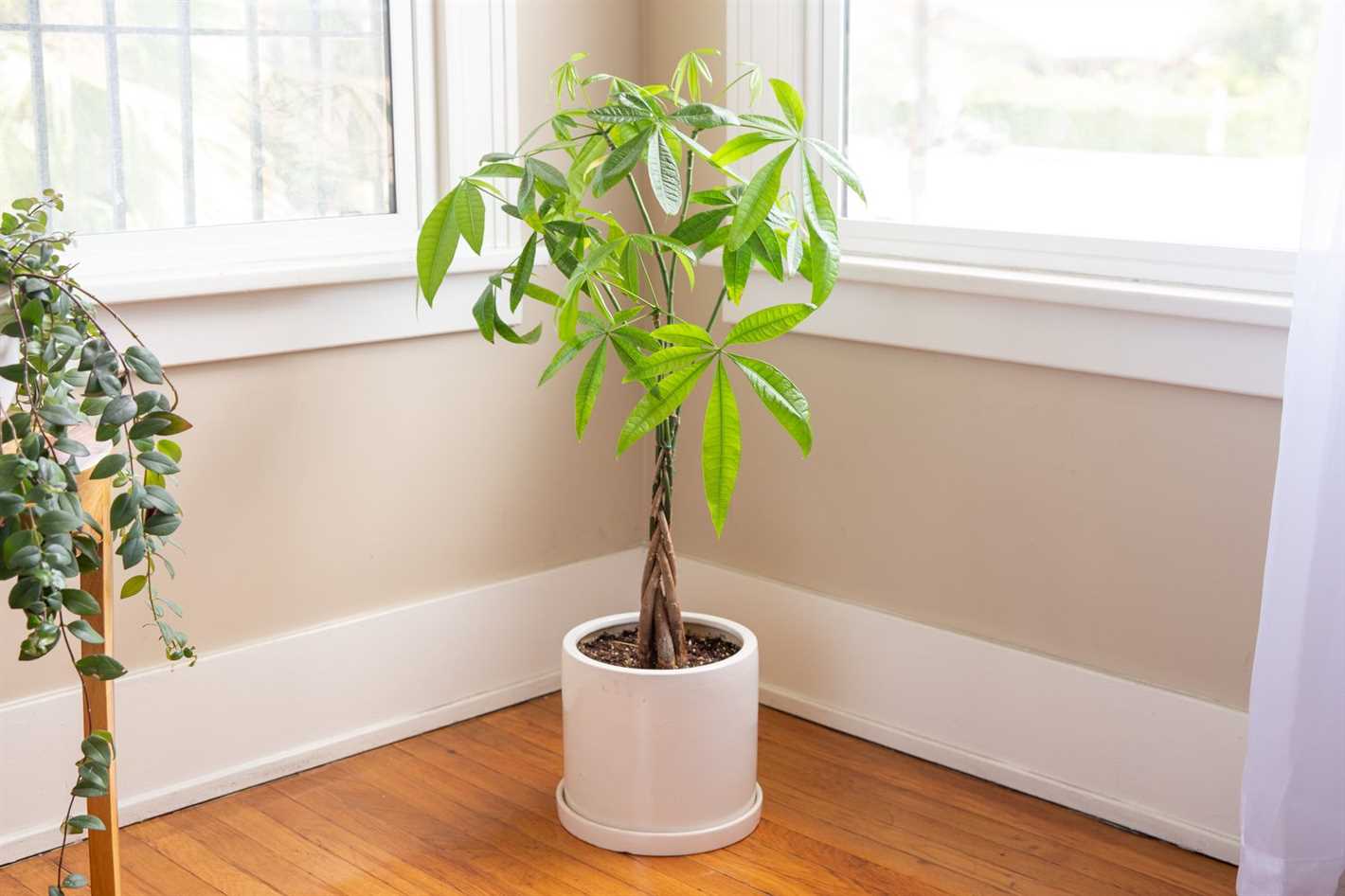
The money tree, also known as the Pachira aquatica, is believed to bring good luck and fortune. It has thick, braided stems and bright green leaves. Money trees prefer bright, indirect light and regular watering, but they can tolerate lower light conditions and occasional neglect.
Remember, even low-maintenance indoor trees require some care and attention. Be sure to check the specific care instructions for each tree to ensure it thrives in your indoor environment. Happy indoor gardening!
Colorful Indoor Trees to Brighten Your Space
Adding a colorful indoor tree to your space can instantly brighten up the atmosphere and bring life to any room. Here are some vibrant and eye-catching options to consider:
1. Croton (Codiaeum variegatum)
The croton is known for its dramatic foliage, featuring various shades of red, orange, yellow, and green. It adds a bold splash of color to any room and thrives in bright, indirect light. Due to its tropical origins, the croton prefers higher humidity levels.
2. Fiddle Leaf Fig (Ficus lyrata)
The fiddle leaf fig is a popular choice for indoor plants, thanks to its large, glossy, violin-shaped leaves. It brings a touch of elegance and sophistication to any space with its vibrant green color. This tree requires bright, indirect light and regular watering.
3. Majesty Palm (Ravenea rivularis)
The majesty palm is a stunning indoor tree with its feathery, arching fronds and vibrant green color. It adds a tropical feel to any room and thrives in bright, indirect light. This plant enjoys consistent moisture and high humidity.
4. Chinese Money Plant (Pilea peperomioides)
The Chinese money plant, also known as the pancake plant, features round, coin-shaped leaves that are bright green in color. It is not only a beautiful addition to your space but is also said to bring good luck and positive energy. This plant prefers bright, indirect light and well-draining soil.
5. Dracaena (Dracaena spp.)
Dracaena plants come in various colorful varieties, such as the tricolor dracaena with its green, yellow, and pink leaves or the dragon tree with its deep red foliage. These trees are easy to care for and thrive in a wide range of light conditions, making them versatile options for any space.
Remember to consider the light and humidity requirements of each tree before choosing the perfect one for your space. With the right care, these colorful indoor trees will bring vibrancy and life to your home or office.
Pet-Friendly Indoor Trees: Safe Options for Your Furry Friends
If you’re a pet owner, you know how important it is to keep your furry friends safe and happy. This includes making sure the indoor plants you choose are non-toxic to pets. There are several pet-friendly indoor trees that can add a touch of nature to your home without compromising your pet’s health.
1. Areca Palm (Dypsis lutescens)
The Areca Palm, also known as the Butterfly Palm, is a popular choice for pet owners. Not only is it non-toxic to cats and dogs, but it also helps purify the air by removing harmful toxins, making it beneficial for both you and your pets.
2. Boston Fern (Nephrolepis exaltata)
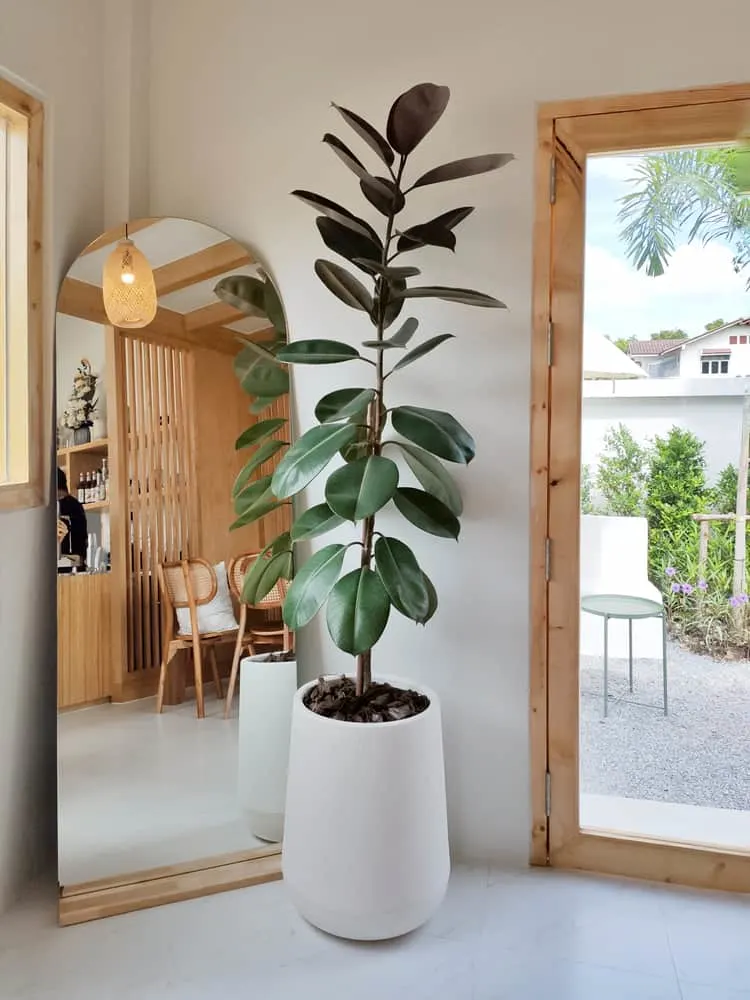
Boston Ferns are not only beautiful, but they are also safe for pets. These ferns are non-toxic and can help improve air quality by adding humidity to the room. Just be sure to keep the soil moist to keep your fern happy and healthy.
3. Money Tree (Pachira aquatica)
The Money Tree is a popular indoor tree that is safe for pets. It is believed to bring good luck and prosperity, making it a popular choice for many households. With its braided trunk and shiny green leaves, it adds a touch of elegance to any room.
4. Spider Plant (Chlorophytum comosum)
The Spider Plant is an easy-to-care-for and pet-friendly indoor tree. Its long, arching leaves add a stylish touch to any space, and it is safe for both cats and dogs. Spider Plants are also known for their air-purifying qualities, making them a win-win for pet owners.
5. Rubber Tree (Ficus elastica)
The Rubber Tree is a popular indoor tree known for its broad, glossy leaves. It is non-toxic to pets and can tolerate a wide range of light conditions, making it a versatile choice for your home. Just be careful not to overwater it, as it prefers slightly dry soil.
6. Bamboo Palm (Chamaedorea seifrizii)
The Bamboo Palm, also known as the Reed Palm, is a pet-friendly indoor tree that adds a tropical touch to any space. It is non-toxic to pets and can thrive in low light conditions, making it a great choice for those with limited sunlight.
7. Friendship Plant (Pilea involucrata)
The Friendship Plant, with its textured leaves and vibrant colors, is a pet-friendly indoor tree that is sure to catch the eye. It is non-toxic to pets and can tolerate low light conditions, making it a great choice for those looking for a low-maintenance option.
Remember to always research the specific needs of any indoor tree before bringing it into your home, as individual pets may have allergies or sensitivities. With the right pet-friendly indoor trees, you can create a safe and beautiful environment for both you and your furry friends.
Tropical Indoor Trees: Bringing the Exotic to Your Home
Indoor trees are a fantastic addition to any home, and tropical indoor trees bring a touch of exotic beauty that can transform your living space. These lush, green trees are perfect for creating a tropical oasis right in your own home.
Benefits of Tropical Indoor Trees
Tropical indoor trees offer many benefits beyond their aesthetic appeal. Here are a few reasons why you should consider adding a tropical tree to your indoor plant collection:
- Air purification: Tropical indoor trees are excellent natural air purifiers. They help remove toxins and improve the air quality in your home, creating a healthier environment for you and your family.
- Humidity regulation: Many tropical trees thrive in humid conditions, which can help regulate the humidity levels in your home. This is especially beneficial during dry winter months when indoor air tends to be drier.
- Visual appeal: With their large, vibrant leaves and unique shapes, tropical indoor trees add an instant visual appeal to any room. They can serve as beautiful focal points or as complimentary accents to your existing décor.
- Relaxation and stress relief: The presence of indoor trees, especially tropical varieties, can create a calming, tropical ambiance in your home. They can help reduce stress, promote relaxation, and create a soothing environment.
Popular Tropical Indoor Trees
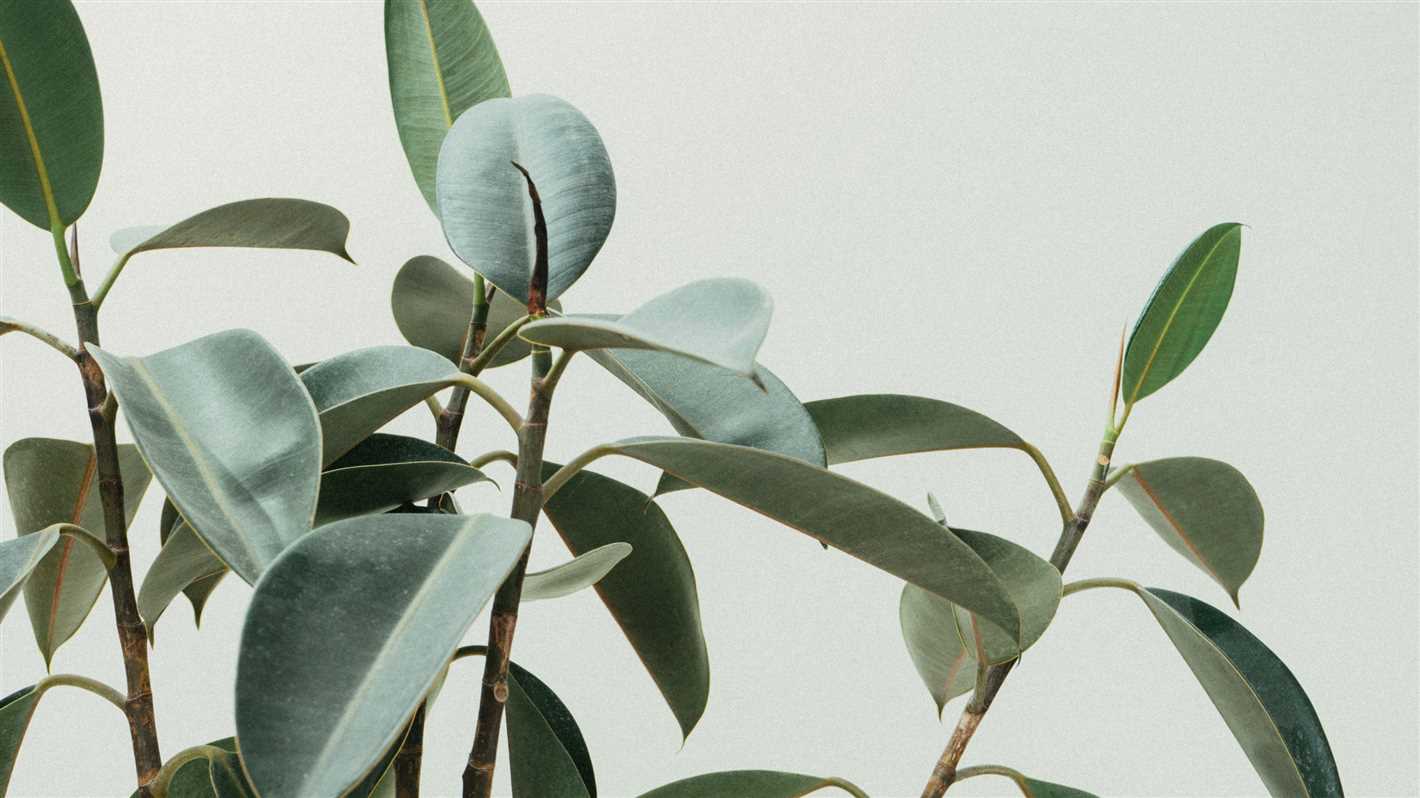
There are several varieties of tropical indoor trees that are well-suited for indoor growing. Here are some popular options:
- Bird of Paradise (Strelitzia reginae): Known for its stunning orange and blue flowers, the Bird of Paradise is a beautiful tropical tree that can thrive indoors with proper care. It requires bright, indirect light and well-draining soil.
- Fiddle Leaf Fig (Ficus lyrata): The Fiddle Leaf Fig is a popular choice for interior design enthusiasts. Its large, glossy leaves add a touch of elegance to any room. It prefers bright, indirect light and regular watering.
- Areca Palm (Dypsis lutescens): With its feathery, arching fronds, the Areca Palm brings a tropical vibe to any space. It thrives in bright, indirect light and requires regular watering.
- Rubber Tree (Ficus elastica): The Rubber Tree is a hardy and low-maintenance tropical indoor tree. Its large, glossy leaves and adaptability make it a popular choice for beginners. It prefers bright, indirect light and moderate watering.
Care Tips for Tropical Indoor Trees
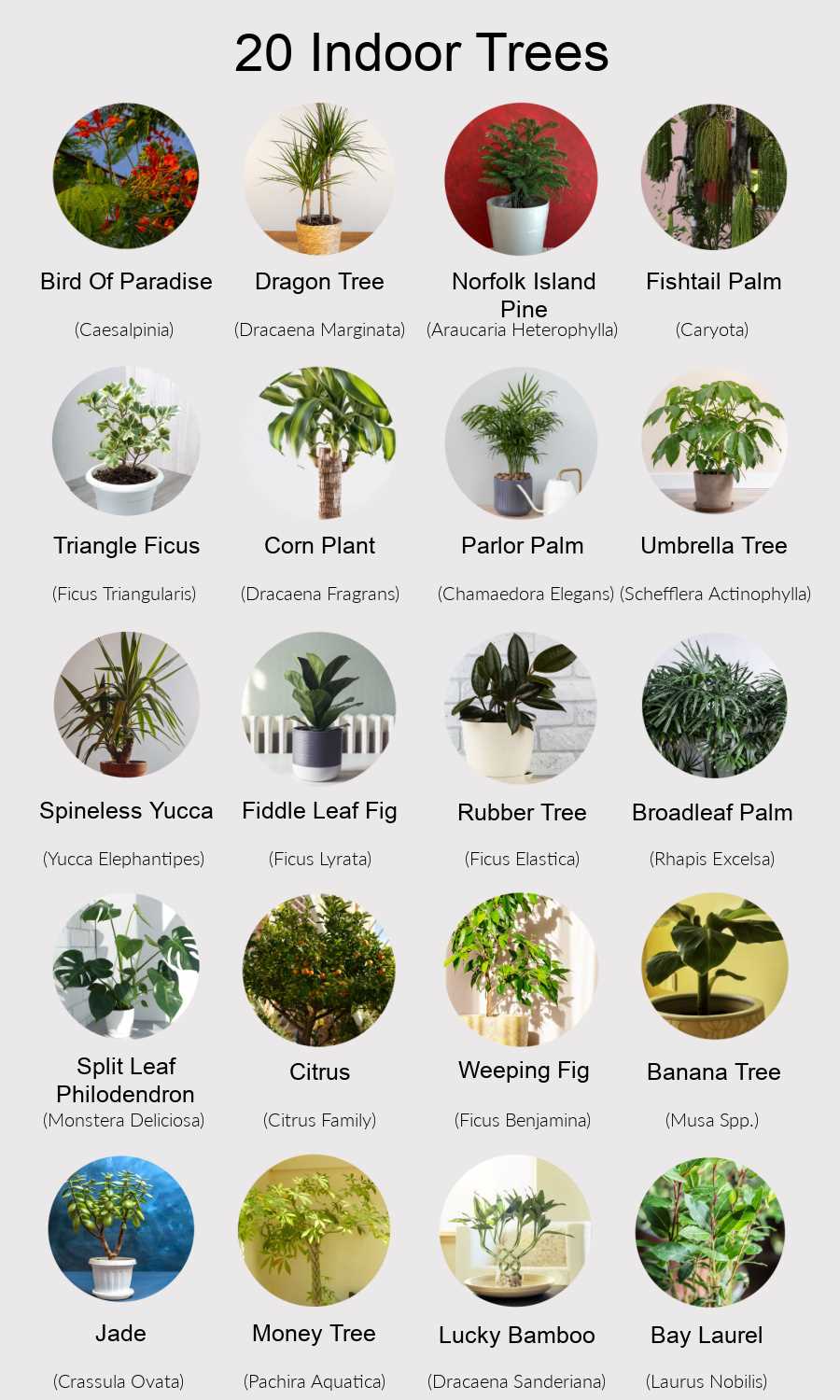
To ensure the health and longevity of your tropical indoor trees, follow these care tips:
- Light: Most tropical indoor trees prefer bright, indirect light. Avoid placing them in direct sunlight as it can scorch their leaves.
- Humidity: Tropical trees thrive in humid conditions. Mist their leaves regularly or place a tray filled with water and pebbles near the tree to increase humidity levels.
- Watering: Water your tropical tree when the top inch of soil feels dry. Avoid overwatering as it can lead to root rot.
- Fertilization: Feed your tropical tree with a balanced houseplant fertilizer once a month during the growing season.
- Pruning: Remove any dead or damaged leaves to promote new growth and maintain the tree’s shape.
By bringing tropical indoor trees into your home, you can create a vibrant and relaxing atmosphere that resembles a tropical paradise. With proper care and attention, these stunning trees will thrive and bring a touch of the exotic to your living space.
Unique Indoor Trees: Stand Out with Unusual Varieties
Indoor trees are a great way to bring nature into your home or office. They not only add beauty and freshness to your space, but they also help improve air quality and create a calming environment. While there are many common indoor tree varieties like the Fiddle Leaf Fig or the Rubber Tree, if you’re looking to stand out and make a statement with your indoor plants, consider these unique and unusual varieties:
Bottle Palm
- The Bottle Palm, also known as the Hyophorbe lagenicaulis, is a small palm tree with a distinctive bottle-shaped trunk.
- It has attractive feather-like leaves that can give any room a tropical touch.
- It is relatively low maintenance, requiring bright indirect light and well-drained soil.
Dwarf Umbrella Tree
- The Dwarf Umbrella Tree, or Schefflera arboricola, is a compact version of the popular Umbrella Tree.
- It has glossy green leaves that resemble the shape of an umbrella.
- It is a great choice for small spaces and can be easily pruned to maintain its size.
- It prefers bright indirect light and regular watering.
Money Tree
- The Money Tree, or Pachira aquatica, is a unique tree with braided trunks.
- According to legend, it brings good luck and prosperity to its owner.
- It requires bright indirect light and regular watering.
- It is believed that the more leaves the Money Tree has, the more luck it will bring.
Dragon Tree
- The Dragon Tree, or Dracaena marginata, is a stunning tree with long, slender leaves that have a deep red or purple color.
- It is known for its air-purifying properties and can help remove toxins from the air.
- It can tolerate a wide range of light conditions, but prefers bright indirect light.
- It is relatively low maintenance and can be a great addition to any indoor space.
These unique indoor tree varieties are sure to make a statement in your space and leave a lasting impression. Whether you choose the Bottle Palm, Dwarf Umbrella Tree, Money Tree, or Dragon Tree, you can enjoy the beauty and benefits that indoor trees bring to your home or office.
Small Indoor Trees for Limited Space
If you live in a small apartment or have limited space in your home, you can still enjoy the beauty and benefits of indoor trees. Small indoor trees are perfect for adding a touch of nature to any space without taking up too much room.
1. Ficus Bonsai
The Ficus Bonsai is a popular choice for small indoor trees. It has a beautiful trunk and delicate foliage, making it a stunning addition to any room. The Ficus Bonsai is low-maintenance and can tolerate low light conditions, making it ideal for small spaces.
2. Money Tree
The Money Tree, or Pachira aquatica, is another great option for limited space. It has braided trunks and vibrant green leaves that bring a touch of tropical beauty indoors. The Money Tree is known for its symbol of good luck and prosperity, making it a popular choice for small indoor trees.
3. Norfolk Island Pine
The Norfolk Island Pine is a small evergreen tree that can be grown indoors. It has soft, feathery foliage and a pyramid shape, adding a unique aesthetic to any space. The Norfolk Island Pine can tolerate low light conditions and its compact size makes it perfect for small spaces.
4. Miniature Olive Tree
The Miniature Olive Tree, or Olea europaea, is a small indoor tree that adds a touch of Mediterranean charm to any room. It has silvery-green leaves and can produce small olives under the right conditions. The Miniature Olive Tree is a low-maintenance option that can thrive in limited space.
5. Ponytail Palm
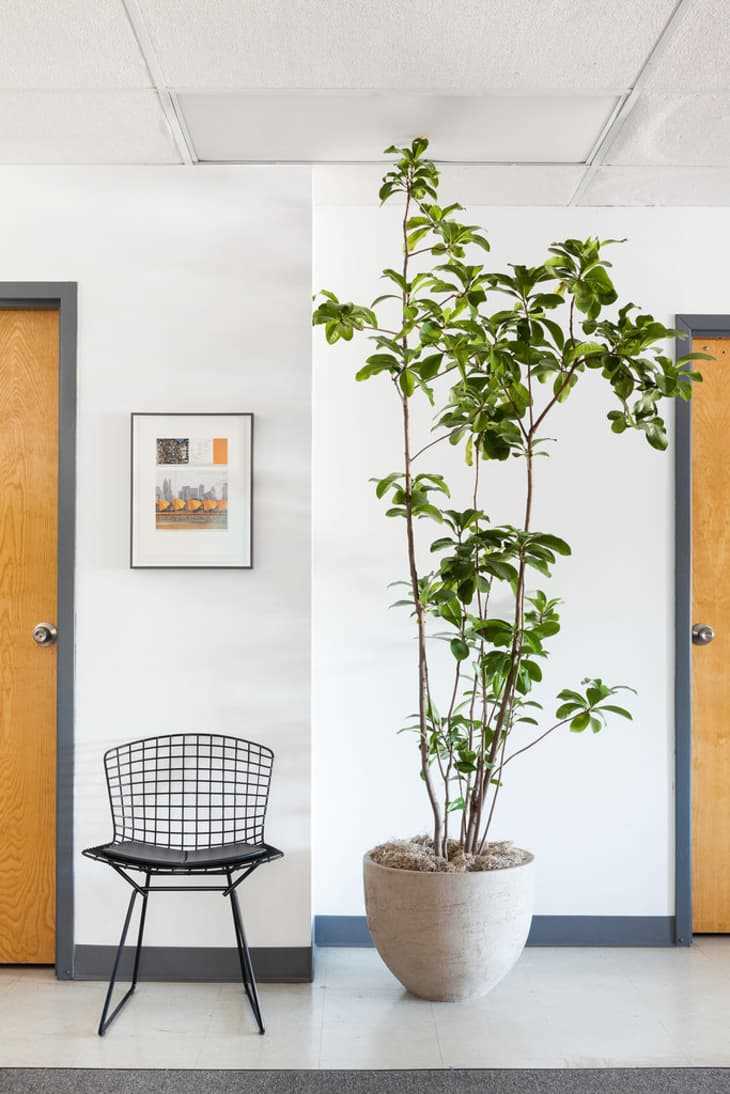
The Ponytail Palm, or Beaucarnea recurvata, is a unique small indoor tree that is perfect for limited space. It has long, curly leaves that resemble a ponytail and a distinctive swollen base. The Ponytail Palm is a drought-tolerant plant that can thrive in low light conditions, making it an excellent choice for small spaces.
No matter how limited your space may be, there is a small indoor tree that can fit perfectly into your home. These trees not only add beauty to your space but also provide numerous health benefits, such as purifying the air and reducing stress. So go ahead, bring the beauty of nature indoors with a small indoor tree.
Large Indoor Trees: Creating a Statement in Your Interior
You don’t need a spacious outdoor garden to enjoy the beauty and benefits of trees. Large indoor trees are an excellent way to bring nature into your interior space and create a bold statement. With their grand presence and lush foliage, these trees can transform any room, adding elegance, height, and a touch of tranquility.
Benefits of Large Indoor Trees
- Improved air quality: Indoor trees act as natural air purifiers, filtering out toxins and releasing clean oxygen into the air. Their broad leaves can absorb pollutants and release moisture, creating a healthier environment for you and your family.
- Enhanced aesthetics: Large indoor trees instantly add visual interest, texture, and color to any space. They bring a touch of drama and sophistication, making a stunning focal point in your interior design.
- Reduced stress: Spending time around trees can have a calming effect on our minds and bodies. Large indoor trees create a peaceful atmosphere, helping to reduce stress and promote overall well-being.
- No seasonal limitations: Unlike outdoor trees, large indoor trees thrive year-round, regardless of the weather. They bring the beauty of nature inside your home, even during the winter months.
Popular Varieties of Large Indoor Trees
There are numerous options when it comes to choosing a large indoor tree for your space. Here are some popular varieties:
- Fiddle Leaf Fig (Ficus lyrata): Known for its large, violin-shaped leaves, the fiddle leaf fig is a favorite among interior designers. It adds an elegant touch to any room and can grow up to 10 feet tall.
- Rubber Tree (Ficus elastica): With its glossy, leathery leaves, the rubber tree is a low-maintenance choice for indoor greenery. It can reach impressive heights of 8 to 10 feet.
- Dragon Tree (Dracaena marginata): This tree features long, narrow leaves with red edges, adding a unique touch to your interior. It can grow up to 10 feet tall with proper care.
- Kentia Palm (Howea forsteriana): The Kentia palm is a classic choice for creating a tropical ambiance indoors. With its feathery fronds, it adds a touch of luxury and can grow up to 12 feet tall.
Caring for Large Indoor Trees
Proper care is essential to ensure the health and longevity of large indoor trees. Here are some tips:
Light:
Most large indoor trees prefer bright, indirect light. Place them near windows or in well-lit areas of your home. Avoid exposing them to direct sunlight, as it can scorch their leaves.
Watering:
Water your large indoor trees thoroughly but allow the top inch of soil to dry out between waterings. Overwatering can lead to root rot, while underwatering can cause stress and leaf drop.
Fertilization:
Feed your large indoor trees with a balanced fertilizer during the growing season (spring and summer). Follow the package instructions for the appropriate dosage and frequency.
Pruning:
Regularly prune your indoor trees to maintain their shape and remove any dead or yellowing leaves. Pruning also helps to stimulate growth and prevent overcrowding.
By incorporating large indoor trees into your interior design, you can create a stunning, natural focal point while enjoying the many benefits they offer. With the right care and attention, these statement trees will thrive and bring a touch of nature into your home.
Q&A:
What are the benefits of having indoor trees?
Having indoor trees can bring numerous benefits to your home. They help improve air quality by producing oxygen and filtering out pollutants. They also add natural beauty and a sense of tranquility to indoor spaces.
What are the different types of indoor trees?
There are various types of indoor trees to choose from. Some popular options include the Fiddle Leaf Fig, the Pothos, the Dracaena, the Rubber Tree, and the Snake Plant.
What is the best type of indoor tree for small spaces?
If you have limited space, a good option for an indoor tree would be the Bonsai tree. Bonsai trees are miniature trees that can be grown in small pots and are perfect for adding a touch of nature to tight spaces.
How often should indoor trees be watered?
The watering frequency for indoor trees can vary depending on the type of tree and its specific needs. As a general rule, it’s important to water them when the top inch of soil feels dry to the touch. Overwatering can be harmful, so it’s important to find a balance.
What are some tips for caring for indoor trees?
To care for indoor trees, make sure they receive adequate sunlight, as most trees need a good amount of natural light. Regularly check the soil moisture and water accordingly. Additionally, dust the leaves regularly and keep an eye out for pests.
Can indoor trees survive in low light conditions?
Some indoor trees can tolerate low light conditions, but it’s important to note that most trees still require a certain amount of light to grow and thrive. If you have low light conditions, it’s best to choose a tree that is known for its ability to adapt to such conditions.
Video:
HOUSEPLANT CARE TIPS FOR BEGINNERS » + printable guide







